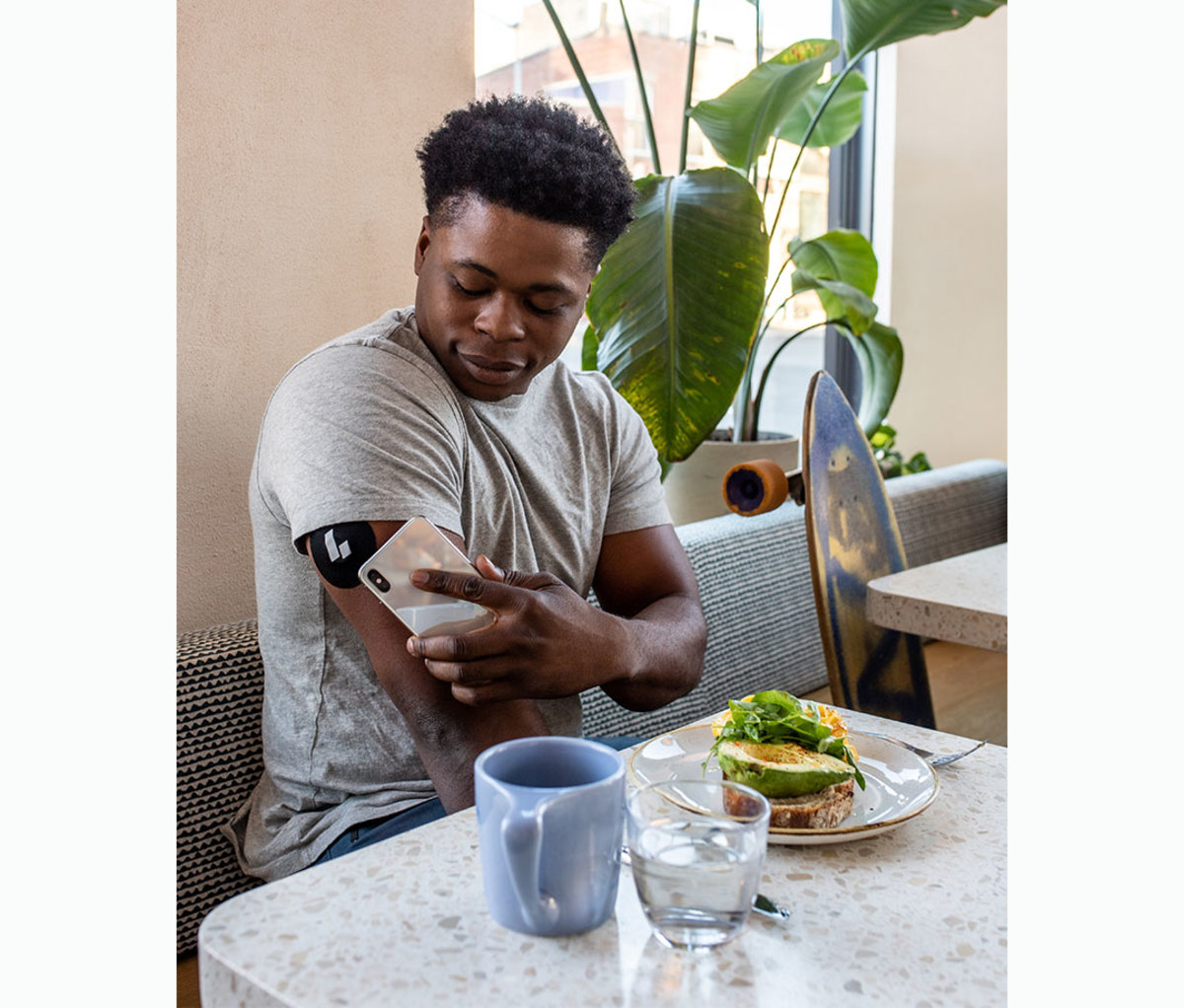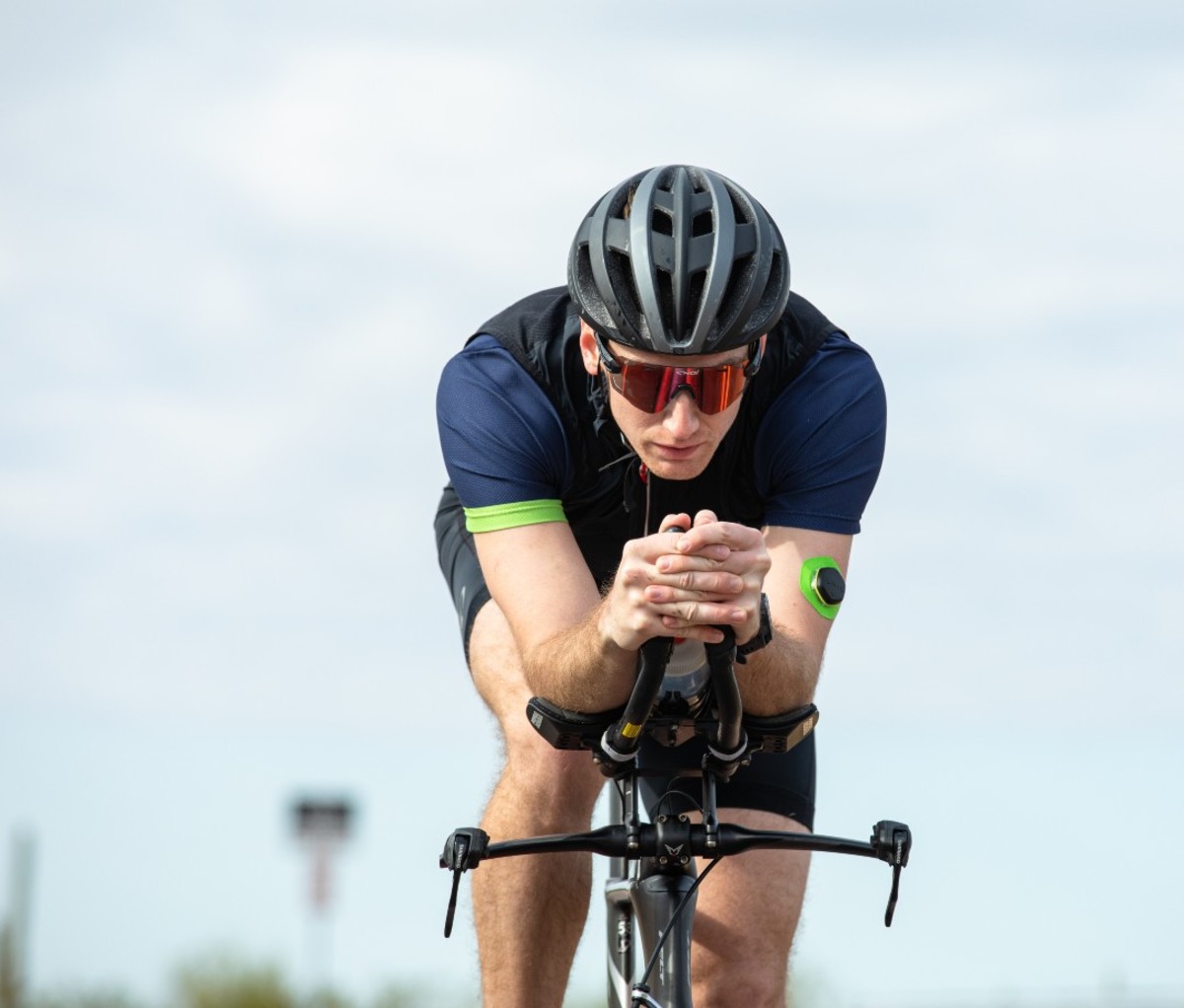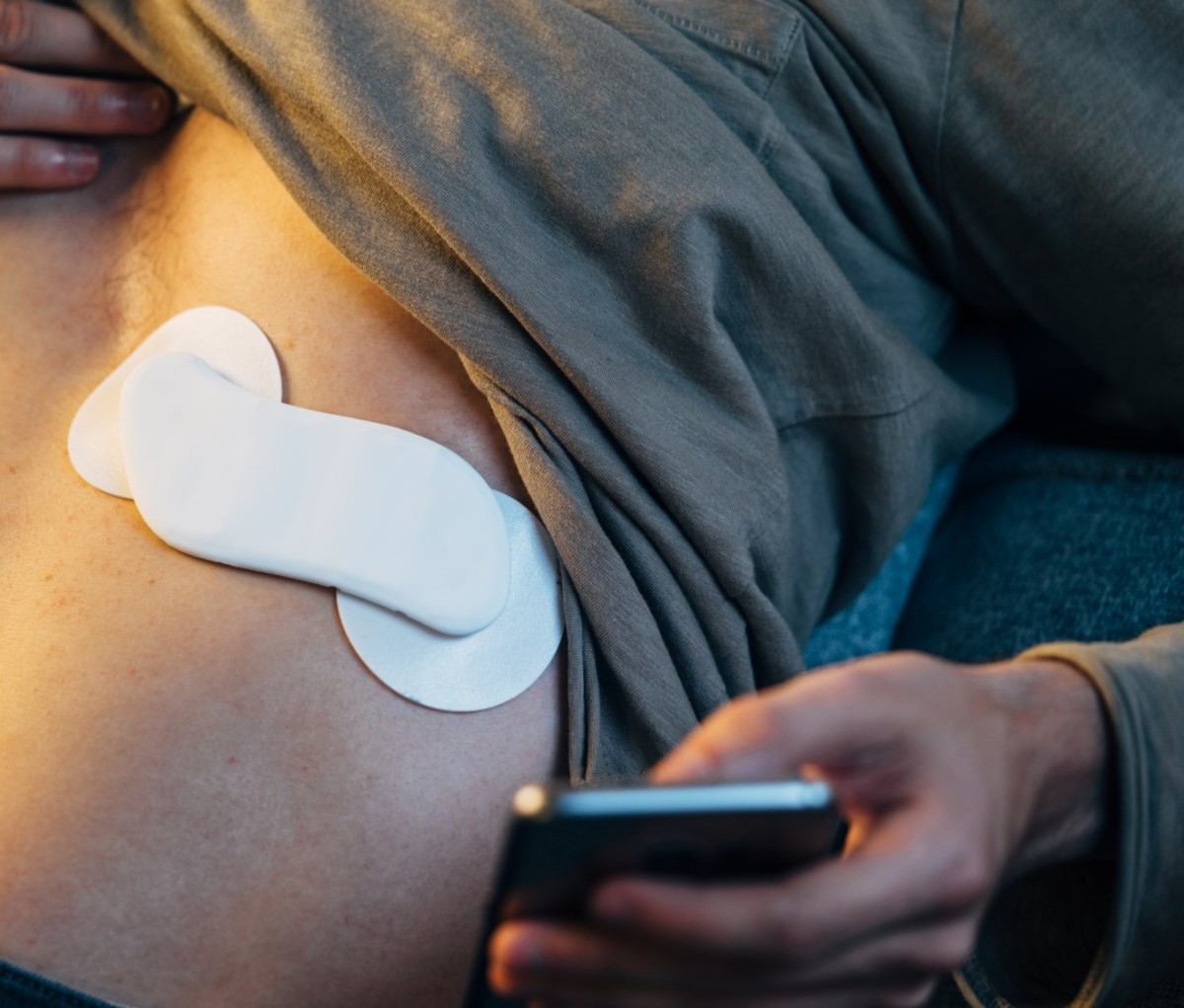Best Stick-on Biosensors to Hack Your Wellness
In the not-so-distant past, wearing a computer on your wrist felt futuristic. Now, a fifth of U.S. adults regularly wear a smartwatch or fitness tracker, per the Pew Research Center. What feels more like science fiction now is beaming your body’s biometrics—like blood sugar levels, heart rate and sweat makeup—to your phone via stick-on biosensors.
Diabetics have been using sensors for decades to track glucose levels. A continuous glucose monitor uses a tiny filament (the width of two or three human hairs) to penetrate just below your skin’s surface, explains Marc Taub, Ph.D., a divisional vice president of technical operations for Abbott Laboratories. “An enzyme on that sensor generates a current that’s proportional to the amount of glucose in the interstitial fluid surrounding your cells,” he says. Then, that data is translated into a value consumers can understand.
Earlier this year, Abbott announced Lingo, a line of consumer biowearables—which are still under development—that use that same technology to track ketones (to see how fast you’re getting into ketosis and provide dietary insights) and lactate build-up (which can inform performance). Compared to wrist-based sensors that use light to penetrate the skin, “these sensors can be very accurate,” says Taub. “They’re not susceptible to interference or positioning and don’t require calibration.”
Other researchers don’t think they need to go below the skin. University of California San Diego engineers developed a neck patch that tracks blood pressure and heart rate while monitoring glucose, lactate, alcohol, or caffeine levels. A team at Stanford University designed a stretchy stick-on that detects pulse, respiration, and muscle flexion. And engineers at Tufts University designed a sensor that sticks to your teeth and measures salt, glucose and alcohol as you eat.
Non-medical biosensors are still an emerging part of the wearable industry, but it’s not hard to get your hands on the newest tech. “The data that comes from these biomarkers can help people maximize their health and wellness and athletic pursuits,” says Taub. “It’s natural that people would seek access to this type of data to inform their decisions.” If you’re intrigued, here’s where to start.

Levels
Keeping your blood sugar levels in check can improve sleep, better regulate mood, aid weight loss and boost athletic performance. Levels tracks blood sugar levels around the clock and lets you manually log meals, exercise and even stressful moments on the app to see how your body responds at a granular level to specific foods, stressors and physical strain so you can course-correct in real time and stay in more optimal zones.
[$399 for one month; levelshealth.com]
Get it
Nix
Figuring out how much water you need during exercise is like trying to solve for X in an algebraic equation. As you work out, Nix—a watch-face-size sensor that sticks to your upper arm—streams your sweat rate, electrolyte loss rate and sweat composition data to an app, which provides personalized notifications to help you stay hydrated. It even integrates with Apple Watch, Garmin watches and bike computers.
[$129; nixbiosensors.com]
Get it
Lief
Stress is inevitable, but chronic stress leads to increased risk of heart attack, stroke, weight gain and more. Stick Lief under your pectoral muscle, and the medical-grade ECG hardware tracks heart rate variability (time between heartbeats) and breath to assess real-time stress. It vibrates when levels are higher than normal, a kind of cognitive behavioral therapy that teaches you to identify triggers, then self-regulate.
[$99/month; getlief.com]
Get it https://ift.tt/2kSJAXW December 30, 2022 at 05:12AM Men's Journal

Comments
Post a Comment